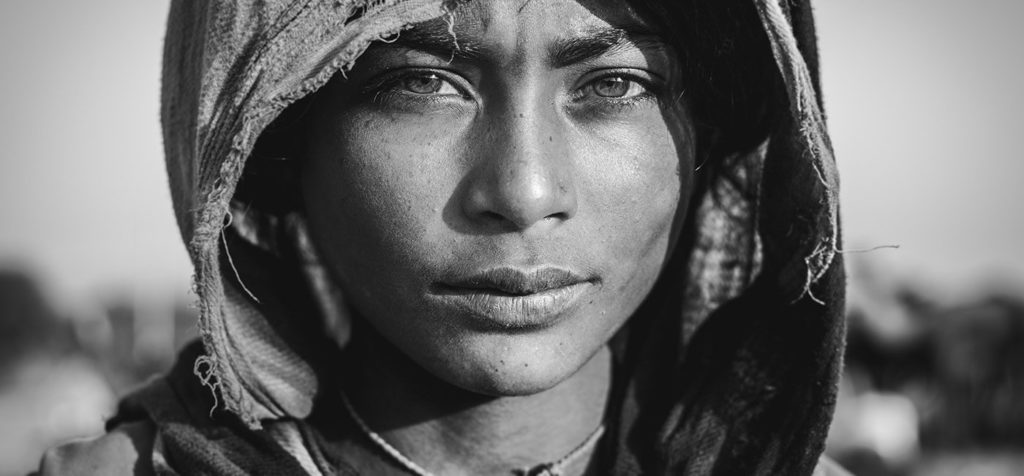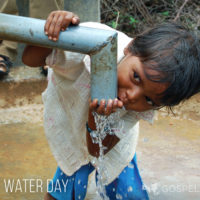WILLS POINT, TX – Gospel for Asia (GFA) Special Report on the aftermath of acute gender imbalance: Discussing the horrendous reality of 100 million missing women worldwide.
One of the stunning stories from Scripture tells about the uninvited woman who crashed a VIP party at the home of an important religious leader. This is a gal whose bad reputation preceded her—a “woman of the city” reports the account in the book of Luke. Some versions even say that she “was a great sinner.”
Humph, thinks the very important dignitary whose party has been so rudely disrupted by this emotional female basket case. If he [Jesus] was a true prophet, he would know what kind of woman this is, for she is a great sinner.
This is a powerful story of male intervention, protection and advocacy, and in this case, it is Jesus who intervenes for a weeping woman, provides protection and clearly illustrates how to advocate for those wounded and longing for forgiveness.
“Simon,” Jesus asks, “Do you see this woman?”
Do you see this woman? What a question!
Do you see this woman? This is a question that needs to be asked regarding the astonishing demographic figure that is being forced upon our contemporary discussions regarding the status of women in the world today. Indeed, demographers are telling us that there are as many as 100 million women unaccounted for in the projections made by statisticians whose job it is to analyze and project the populations of the nations.
Simply stated, the devaluation of women and the often societally approved discrimination against them are creating a global crisis. This article examines this reality and seeks to propose that there are attitudes and actions we can all take to decrease and eventually eliminate this outrageous discrepancy. But first, we have to “see the women.”
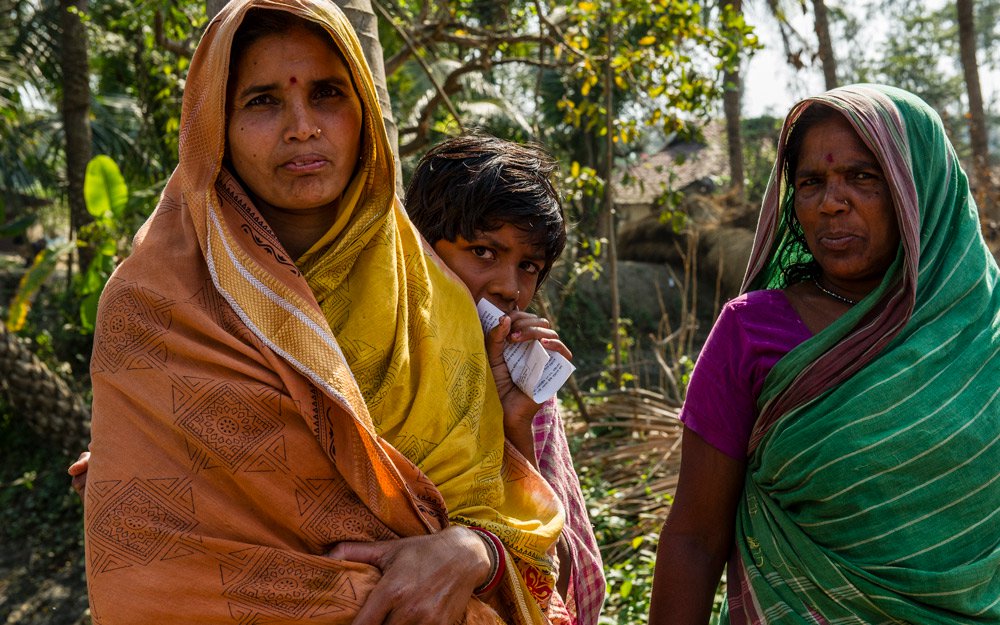
What Happened to the 100 Million Missing Women?
My husband, David Mains, tells the story of being in Asia with Dr. KP Yohannan, the founder and director of Gospel for Asia (GFA). They were attending a conference with some 300 men in attendance in an open-air pavilion. Dr. K.P. was preaching on how these men treated their wives, saying something that memory recalls as being to the effect of, “You treat them like servants [by saying], ‘Do this; do that. Take care of me.’ You get angry and yell. Some of you even push them around. But you are not freeing them to be the women God created them to be.”
The power of this exhortation and of the Scriptures verifying his instruction manifested itself in a loud groaning that began to rise out of the group of men sitting on wooden pews.
“At first,” David remembers, “I thought it was a thunderstorm. I had never heard anything like it in my life. Then I realized these men were groaning in repentance and remorse.”
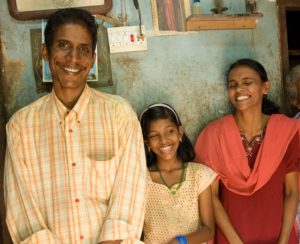
The devaluation of women in marriage, which those men repented of many years ago, is merely one symptom of what causes the 100-million-missing-women global crisis. If we choose to “see the women,” to study the plight of women worldwide and to pay attention to their distress, we will quickly conclude that women’s lives are threatened from the womb through widowhood.
Indeed, the whole world needs to be groaning in remorse and repentance when we realize that 100 million women who should be alive according to statisticians’ projections are nowhere to be found.
The reasons for this are varied and tragic. Even the numbers vary somewhat. In a 1990 essay published in The New York Review of Books, Nobel Prize-winning economist Amartya Sen claimed there were 100 million missing women. [1] Through the following decade, Sen continued to expand his exploration and discoveries, which were published in many subsequent academic works.
Though estimates of between 90 and 100 million missing women, as well as the various causes for the phenomenon, have been studied, debated and analyzed by demographers and social scientists in the years since Sen’s original announcement, most agree now to the reality that roughly 100 million women, worldwide, are missing.
This number is determined by what is called the sex ratio—a means of measuring the number of males born in a society against the number of women. Generally, the male-female birth ratio is slightly biased toward the masculine sex. Due to some kind of disequilibrium matrix, nature allows for some 105 male births for every 100 female births, on average. [2]
Demographers propose that this is because men are at a higher risk of dying of a variety of causes—violence, accidents, injuries, war casualties—and in time, the sex ratio of a given population for any particular age set begins to equalize. Today, however, when what should be a normal equalized sex ratio is measured in many current populations, particularly in developing countries in Asia, as well as in the Middle East and in parts of Africa, results show a divergence from the norm.
The current sex ratio reveals not a ratio that is beginning to become even between the sexes, but an expanding ratio of men to women of 1.06 (1.06 men per 1 woman), which is far higher than in most countries.
Researcher Amartya Sen concludes: “These numbers tell us, quietly, a terrible story of inequality and neglect leading to the excessive mortality of women.” [3]
Evaluating the Sex-Ratio Disequilibrium
It is here when those of us who care about the state of the world and the suffering and the well-being of the people who inhabit it should begin to groan, loudly and insistently, like a thunderstorm. We need to read the articles that disclose the state of women around the world; we need to do personal research. We need to seek for understanding.
34 million women and girls are trapped in the sex trade, contributing to the missing women dilemma.
There is now a general consensus as to the reasons why sex ratios are teetering on a wild gender imbalance in various countries of the world. Sex-selective abortions, female infanticide, inadequate health care and nutrition for female offspring, lack of pregnancy and childbirth education, and the now booming sex-slave trade industry all contribute to the missing women dilemma.
In their comprehensive book Half the Sky: Turning Oppression into Opportunity for Women Worldwide, Nicholas Kristof and Sheryl WuDunn report, “Far more women and girls are shipped into brothels each year in the early twenty-first century than African slaves were shipped into slave plantations each year in the eighteenth or nineteenth centuries.” [4]
This horrendous reality is verified by the Foreign Affairs journal,[5] and the above husband-and-wife writing team estimate some 34 million women and girls worldwide are trapped in the sex-slave trade.
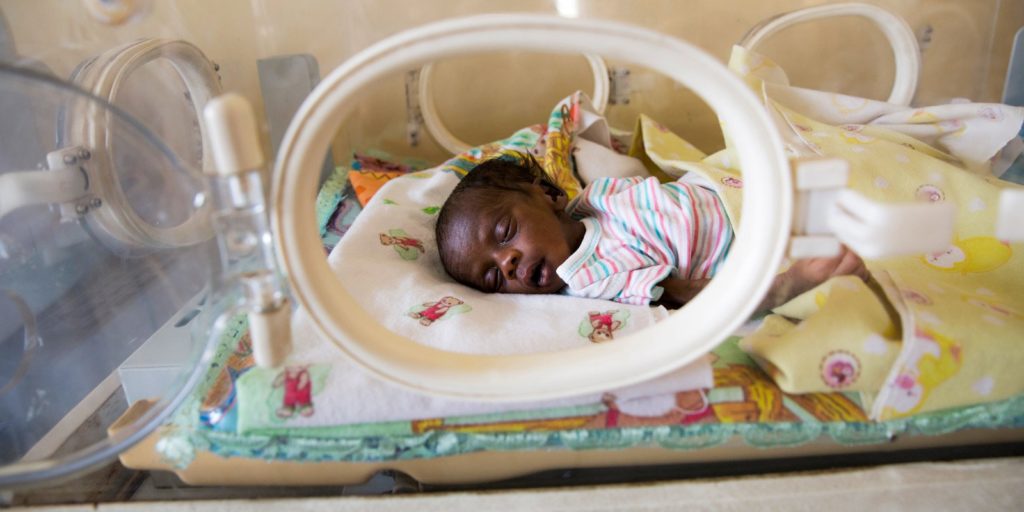
Maternal Mortality and Maternal Morbidity
The issue of malnourishment also takes a generational toll. When girls are malnourished—and historically, girls often live on subsistence diets while their brothers receive the family’s available food—they give birth to underweight babies whose bodies are then more susceptible to disease. Malnourished girls become malnourished women, prone to childbirth losses—miscarriages, stillbirths, infant deaths—and multiple pregnancy complications resulting in mortality.
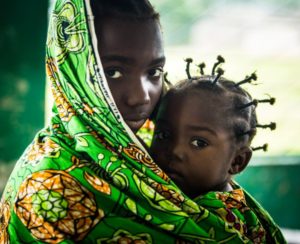
In India, for instance, demographers find that, by and large, the main cause of female deaths is cardiovascular disease—diseases of the heart and blood vessels that can lead to heart attacks or strokes. Medical researchers have discovered a close relationship between low birth weight and eventual cardiovascular diseases at a later age. [6]
Maternal mortality refers to the number of women who die in childbirth. Some 99 percent of women in the world who die giving birth are from poor countries. This is determined by another ratio—the maternal mortality ratio (MMR), the number of maternal deaths for every 100,000 live births. The MMR measures the potential of death per pregnancy. Another ratio measures death probability over a lifetime of multiple pregnancies. The lifetime risk of dying in childbirth is 1,000 times higher in a poor country. [7]
“This should be an international scandal,” Kristof and WuDunn write.
To sketch out this global crisis, Kristof and WuDunn quote some alarming statistics:
- The highest maternal mortality risk in the world is in the African country of Niger.
There the lifetime risk of death is 1 in 7. - In sub-Saharan Africa, the lifetime risk of death in childbirth is 1 in 22.
- India is 1 in 70. [8]
- The United States is 1 in 4,800, a high ratio for a developed and wealthy country.
- In Italy, the lifetime risk is 1 in 26,000.
- In Ireland, the chance of dying in childbirth is 1 in 46,000. [9]
Morbidity is different from mortality. Maternal morbidity deals with injuries during childbirth, and they occur even more frequently than maternal mortality. Again, Half the Sky concentrates pages on occurrence of morbidity, particularly fistulas—in this case, rectovaginal fistulas, which are often the result of trauma in childbirth. Here a tear between the vagina and rectum (also caused by rape) is left untreated in places where there is inadequate health care. These women, many now mothers, having successfully delivered an infant, become outcasts in their villages because they cannot control the flow of urine or feces.
“For every woman who dies in childbirth, at least ten suffer significant injuries such as fistulas or serious tearing,” Kristof and WuDunn write. “Unsafe abortions cause the deaths of seventy thousand women annually and cause serious injuries to another 5 million. The economic cost of caring for those 5 million women is estimated to be $750 million annually. And there is evidence that when a woman dies in childbirth, her surviving children are much more likely to die young as well, because they will have no mother caring for them.” [10]
All these factors are symptoms of one major toxic cause: female discrimination. Simply stated: Women in a cross section of wide-ranging cultures are not valued. In fact, they are actively abused, neglected and abandoned through countless ingrained cultural practices that deem women as inferior to men and ensure they stay in subsistence-like conditions.
The conglomerate of all these causes contributes to the overall demographic reality of 100 million missing women. To repeat Amartya Sen again: “These numbers tell us, quietly, a terrible story of inequality and neglect leading to the excessive mortality of women.”
The Irony of the Skewed Sex Ratio
The irony of the missing-women demographics—enabled by entrenched cultural attitudes and systemic discrimination against the female sex—is that many places in the world with a skewed sex ratio are now experiencing such high female shortages that there are no longer enough women to mate in marriage with the existing male population. Think about that 1.06:1 sex ratio (again, 1.06 men to every 1 woman), and multiply it by the thousands. Imagine what that means. Imagine the implications.
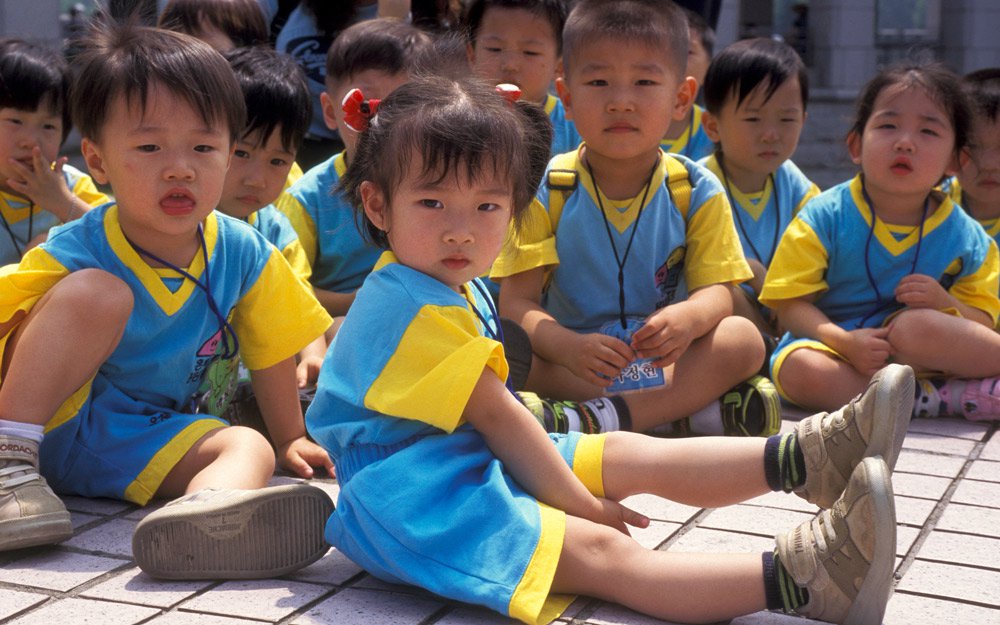
The Wall Street Journal focused an article on this topic that dealt with South Korea:
“A cultural preference for male children has cost Asia dearly. … Not just a human-rights catastrophe, it is also a looming demographic disaster. With Asian birthrates already plummeting, that means millions of women will never be mothers, and the economic and social impact on some of the world’s largest countries is incalculable.
“For decades, South Korea was Exhibit A in this depressing trend. By 1990, as medical advances made prenatal sex selection routine, the ratio of male-to-female babies soared in South Korea to the world’s highest, at 116.5 males for every 100 females.” [11]
Projections made by the Population Council, a New York City-based research center, indicate that if trends continue, there will be an increase to 150 million missing women by 2035. The world is just sensing the demographic wave that was set into motion years ago. This means that in China, by 2035 there will be as many as 186 single men for every 100 women. In India, by 2060 the sex ratio could curve even higher: 191 men for every 100 women. [12]
The governments of both countries have established means and laws to correct this extraordinary deviation. Fetal ultrasound imaging has been restricted (at the least, the reporting of the sex of the child while in utero), and legislation aimed at gender equality, to address gender imbalance has been enacted. China even offers financial incentives to couples with daughters and announced it was abandoning its one-child policy. But demographers warn that even if both countries brought their sex ratios to normal, the damage has been done. Hundreds of millions of Asian men in their 50s will still be unmarried in 2070. In India, the result would be around 15 percent.
Can this rampant and damaging sexism be altered? Remember South Korea, once Exhibit A? Now, partly because of the political insistence of a growing body of educated women, it is beginning to reduce its sex ratio through a variety of national policies. By 2005, the ratio had become 110 males for every 100 female babies. Five years later, the ratio became 107, finally normalizing at the natural level of 105. [13]
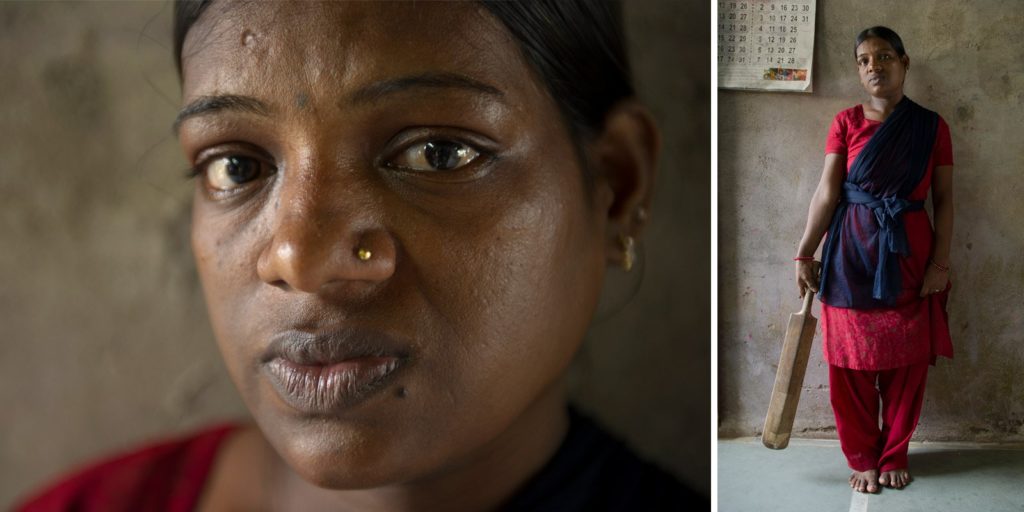
Intimate-Partner Violence Against Women
One of the greatest contributors to this missing-women factor is violence against women—both sexual violence and violence by their own intimate partners. According to the World Health Organization, “Violence against women—particularly intimate partner violence and sexual violence—is a major public health problem and a violation of women’s human rights.” [14]
- Global estimates indicate that about 1 in 3 women worldwide (35 percent) have been victims of physical and/or sexual violence, sometimes inflicted by their own intimate partners, in their lifetimes.
- “As many as 38 percent of murders of women are committed by a male intimate partner.” [15]
- “Violence can negatively affect women’s physical, mental, sexual and reproductive health, and may increase the risk of acquiring HIV in some settings.” [16]
- “Men are more likely to perpetrate violence if they have low education, a history of child mistreatment, exposure to domestic violence against their mothers, harmful use of alcohol, gender imbalance norms including attitudes accepting of violence, and a sense of entitlement over women.” [17]
A conclusion about the above data is, obviously, that intimate-partner violence is an undeniable contributor to the missing-women dilemma. In case there is any doubt as to what exactly is meant by all this, the United Nations defines violence against women as “any act of gender-based violence that results in, or is likely to result in, physical, sexual or psychological harm or suffering to women, including threats of such acts, coercion or arbitrary deprivation of liberty, whether occurring in public or in private life.” [18]
The Coequal Value Seen in Genesis
The extraordinary message of the Christian Scriptures, beginning with the first book of the Old Testament, Genesis, affirms the value of men and women: “So God created man in His own image, in the image of God He created him; male and female He created them.” [19]
Biblically faithful Christianity has always been confronted by this theological premise: Man and woman are created in the image of God. It’s a huge bump in the road for those who might mistreat the female sector within its following and is a premise worthy of the moans and groans of those who hear a sermon pointing out their misconduct. How we treat one another, in Christendom, is evidence of the reality and depth of our faith.
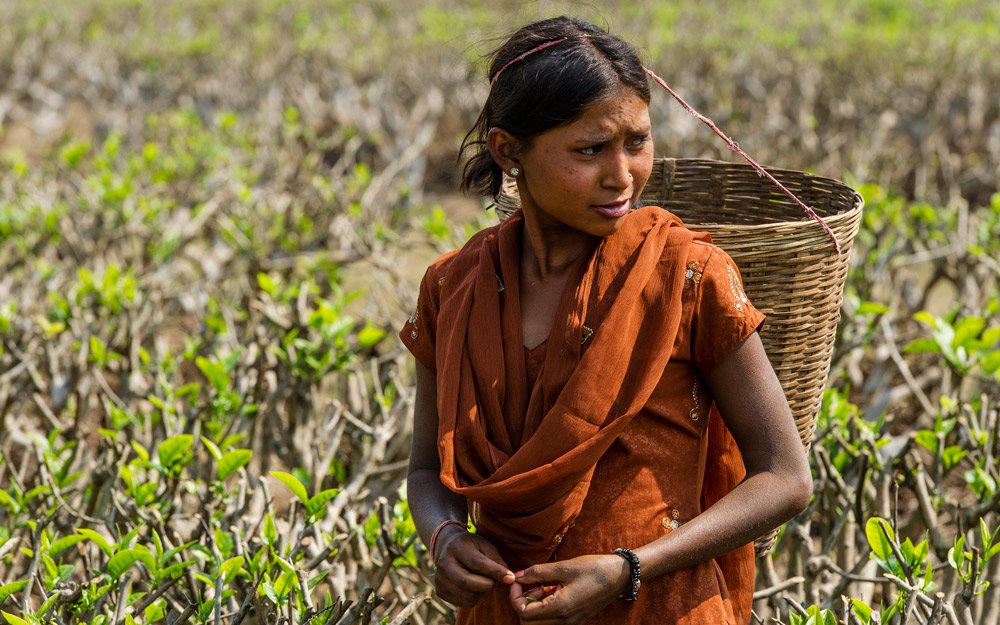
Do You See This Woman?
Let’s summarize again that story from Luke that began this article, “And behold, a woman in the city who was a sinner … brought an alabaster flask of fragrant oil, and stood at His feet behind him weeping; and she began to wash His feet with her tears, and wiped them with the hair of her head; and she kissed His feet and anointed them with the fragrant oil.” [20]
The important religious leader, a Pharisee named Simon, was appalled by this woman who, uninvited, crashed his dinner party. In his heart he thought Jesus could not possibly be who He said He was, or He would know what kind of woman she was. Simon certainly thought he knew what kind of woman she was—an emotional type, obviously; a town prostitute, probably. A woman of bad manners and of lower class, which was not his type of person, certainly.
Jesus tells a parable about two debtors, one who owed a creditor little and one who owed the same man much. Both of their debts were forgiven. Jesus asks his host, Simon, which one he thinks loved the creditor the most—the one with little debt forgiven or the one with much debt forgiven? The answer is obvious, even to those of us reading the story many years removed from the dinner-party incident. We agree with the Pharisee’s answer: the one who was forgiven much.
At the risk of being redundant, it is here that Christ asks the question that resounds through the centuries, one that should be considered by any hostile intimate partner and any theologian or churchgoer who has a twisted, mysogynized theology: “Simon, do you see this woman?”

Do you see this woman? Christ saw the woman, not her bad reputation, not her past misdeeds, not her wayward lifestyle. He saw her best potential self. He saw her broken heart. He saw the gratefulness she felt that any man could think she was something other than the role the community had assigned to her.
Jesus saw the women. If you want to conduct a study as to Jesus’ attitude toward women in a time when they were considered lower than second class, look through the stories collected in the Gospel of Luke. Here we see a man who loved women, advocated for them, healed them and welcomed them as companions in His earthly ministry.
We, too, need to see the women of the world. We need to turn our energies toward helping countries change and cure the great harms that have contributed to the extraordinary demographic imbalance of some 110 males for every 100 women. Indeed, many developing countries consider elevating women from underclass to an educated class as a means of increasing the capacity of the country to function competitively in a global economy.
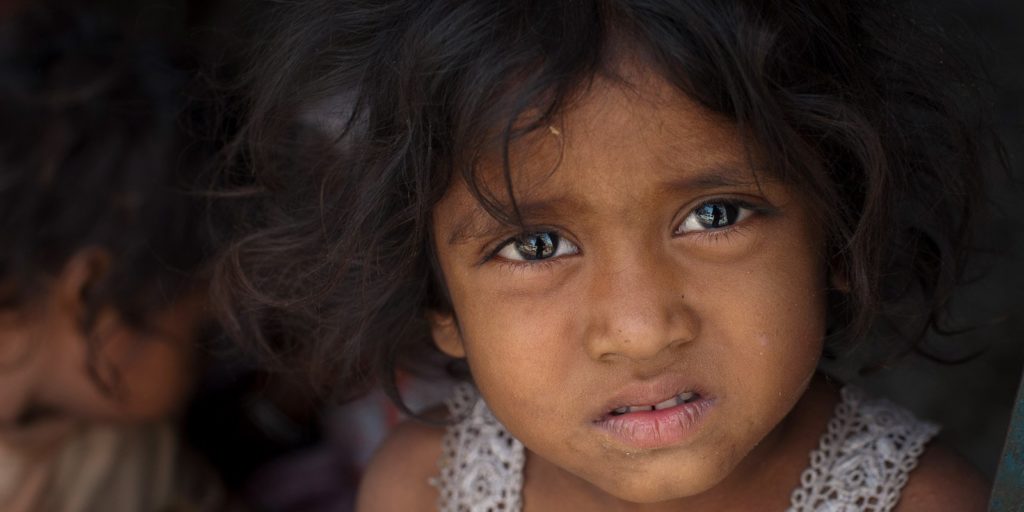
A Consensual Solidarity of Concern
Let us grieve for these who have suffered such hardships, deprivation, bondage, violence, societal disfavor or low self-esteem brought on by the scornful esteem of the men in one’s social circle. Let us form a solidarity of concern and do what we can to change the capacity of others, either men or women, but for the purposes of this article, particularly women.
In 1980, I went on a sponsored survey trip for Food for the Hungry to write about that organization’s work in the disaster areas of the world. It was an extraordinary global journey and an extraordinary exposure to the needs and crises of humanity worldwide as well. At the start of the trip, on April 1 in Hong Kong, I had time to do a study of Christ’s ministry as recorded in the Gospel of Matthew, and I wrote out all the verses to remind myself of how dramatic His healing, teaching and miracle-filled ministry must have been to the masses.
Something about Christ’s response to the needy women who were part of all those crowds touched me deeply, and I wrote:
Lord, I praise You that while You are also God of the individual, You are also God of the masses. What did you have in mind for me to write about these masses of women?
- Those who with little household aids, nevertheless, keep their houses (huts or tents) clean?
- Those who demonstrate industry weaving or knitting?
- Those who work in gardens, hoeing with homemade instruments or digging in the soil with sharpened sticks?
- Those who run sidewalk cafés—little set-up carts?
- Those who pour cool drips of the water they have walked miles to gather over the bodies of their sweaty and dirty children?
- Those who are painstakingly learning English in order to better themselves with foreigners?
- Those who are raising pigs in piggeries?
- Those in refugee camps who have nothing profitable to do afternoon after afternoon after afternoon?
- Those who have willingly offered me their babies because the past is horrendous, their husbands are no longer alive and the future looks hopeless?
- Those with wholesome, plain faces who volunteer their lives to serve the missionaries who bring some sensibility of promise into nonsensical and unpromising conditions?
- Those who plant flowers in front of their settlement housing (canvas tents or ramshackle shelters)?
There is something about actually seeing the masses of needy and desperate yet often-courageous women struggling just to survive in the resettlement housing in Hong Kong, in the refugee camps in Thailand (those fleeing the Pol Pot massacres in Cambodia), in the canvas villages with dirt paths, in the milk-and-food lines provided by development organizations, or in the old abandoned ammo depots now housing a population of 20,000.
A Little Girl’s Future Transformed
A beautiful story from Gospel for Asia’s archives tells about the day a cook at a Gospel for Asia (GFA)-supported Bridge of Hope center noticed an elderly woman begging on the street. The cook was distressed because the older woman had a little girl, filthy and dressed in rags, in tow.
Knowing that adult beggars will often use children as bait to receive monies, then pocket the funds and do nothing for the child, the cook challenged the older woman, “Why are you exploiting this child?”
To the cook’s surprise, the older woman broke into tears and wept.
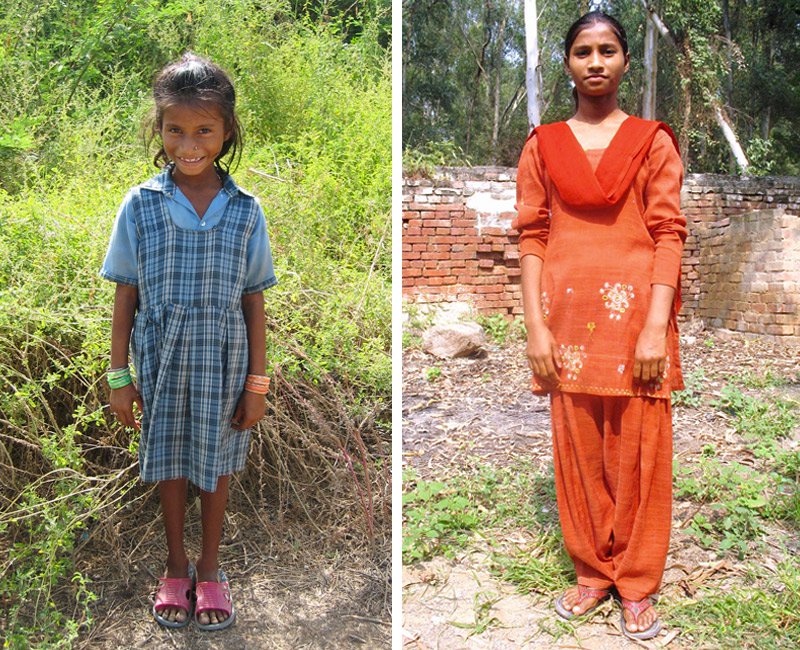
She wasn’t a professional beggar at all, but the grandmother of the little girl, Daya, who had been abandoned by both her mother and father. Without income and desperate, the grandmother had begun begging at bus stops, train stations and on the streets. With a change of heart, the cook invited the grandmother to enroll Daya in the Bridge of Hope center, which was in a building wedged between a railway station and a slum, conveniently available to children without a future.
The little girl was enrolled in the center but was so filthy that other parents complained. The Bridge of Hope staff conducted an intensive scrub session to relieve the child of dirt and germs and to replace the same filthy clothes she wore each day with clean clothes. They introduced her to soap and taught her to use it when she washed.
As the report states, “Daya’s future hung in the balance. If rejected from the Bridge of Hope center, she would return to the streets as one of the hundreds of thousands of child beggars in Asia. At some point, she would likely join the 20 to 30 million other boys and girls who are exploited as child laborers.”
The staff was determined to see that Daya thrived in Bridge of Hope, and she grew up to be an educated young woman. However, millions of other children never get that chance.
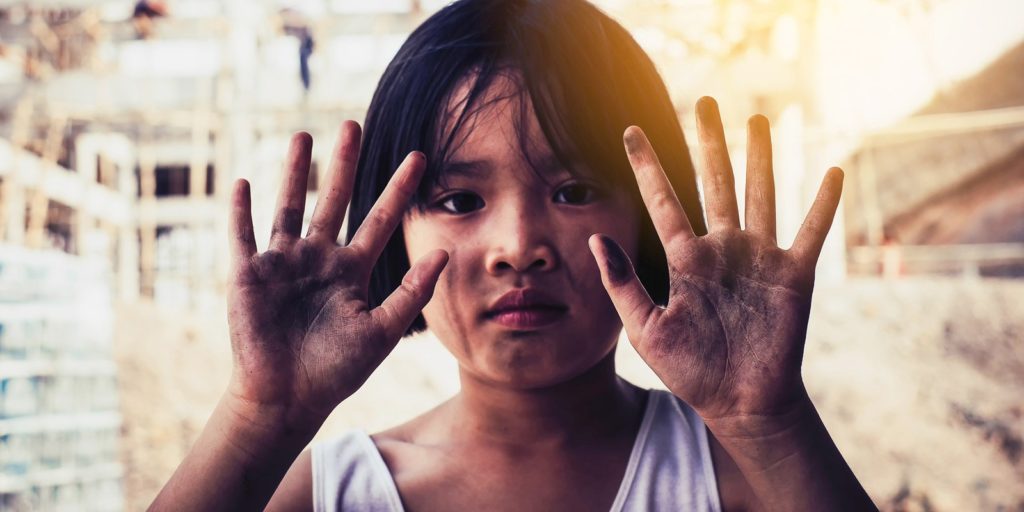
Child Exploitation
In a fact sheet on girls’ education, UNESCO (United Nations Educational, Scientific and Cultural Organization) explains:
- Some 31 million girls of primary-school age are not in school. Seventeen million of these are expected to never enter school.
- Some 34 million female adolescents are missing from secondary schools, which often offer vocational skills that are essential for procuring future jobs.
- Two-thirds of the 774 million illiterate people in the world are female. [21]
Thousands of these children can’t go to school because they are caught in bonded labor.
“It is doubtful they’ve ever held a toothbrush or a bar of soap; they’ve probably never eaten an ice-cream cone or cradled a doll,” Gospel for Asia (GFA) states. “The child laborers of Asia toil in fireworks, carpet and match factories; quarries and coal mines; rice fields, tea plantations and pastures; and even brothels. Because they are exposed to dust, toxic fumes, pesticides and disease, their health is compromised, and their bodies can be crippled from carrying heavy weights.” [22]
Worse still, these children could be entrapped in prostitution.
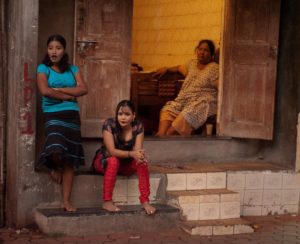
According to Reuters, “Of an estimated 20 million commercial prostitutes in India, 16 million women and girls are victims of sex trafficking, according to [data gatherers].” [23]
Prostitution is not illegal in India so the chances of victimization are mind-blowing. In addition, many impoverished families sell their daughters to opportunists who promise a better life for their children.
ABC News reports, “Aid organizations estimate that 20 to 65 million Indians have already passed through the hands of human traffickers at one point in their lives. Ninety percent of them remain within India’s national borders, and the majority are female and under the age of 18.” [24]
One social worker, Palavi, explained, “Human trafficking works because the victims are afraid and cannot communicate. … Many of them have children who live in constant danger of also being sold or sexually abused. They grow up under the beds where their mothers were robbed of their dignity.” [25]
When census data is gathered, these women, mothers and little girls are not in their villages, local communities or urban settlements. They are hidden by sex slave traders (but made available to the men who seek them out).
Let me ask again the question Jesus asked Simon the Pharisee, “Do you see this woman (or child, or little girl or teenager)?”
I have a granddaughter named Eliana who is 10 years old. Four mornings a week, I pick up Eliana and her brother, Nehemiah (8), to drive them to school. Their younger sister, Anelise (5), is picked up by the preschool bus. My driving effort is to help out their mother, who was married to our son Jeremy Mains. Our son, her husband and the children’s father, died five years ago at age 42 of blastic mantle cell lymphoma.
Angela, my daughter-in-law, is raising the children by herself while holding a full-time job as the director of a local community-outreach organization. She has just completed her dissertation and received a doctorate in adult education. Nevertheless, even with remarkable mothers, studies show that children raised without fathers are vulnerable. So my husband and I live close, are on call when babysitters fall through and try to do a lot of one-on-ones with our grandchildren.
Though I watch these grandchildren grow with an attentive heart, I am certain my granddaughter Eliana will never worry about entering bonded labor or be forced to go begging on the streets. It is impossible for me, even for the sake of achieving a frightening empathy, to impose through my imagination the horror of the lives of some 20 to 65 million trafficked females on these precious little girls I love.
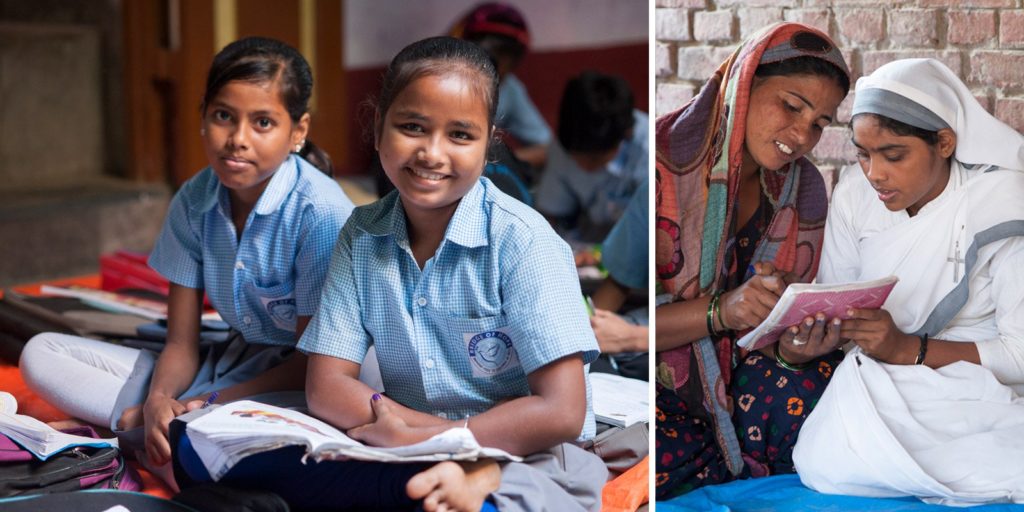
Education as a Deterrent
Education can protect a girl from exploitation—and redirect her future. An educated girl can read. She can find work. She can get training to become a teacher, a doctor or a policewoman, for instance. She can tutor other children. A social system begins to change slowly, very slowly, one educated girl by one educated girl.
The latest statistics regarding GFA’s supported work with women in 2018 include:
290,753 women received free health care training
8,812 sewing machines distributed as a means to obtain work as a seamstress
61,880 illiterate women learned to read and write
11,000+ women desperate for jobs received vocational training
Educating girls is a primary solution to begin changing the statistics of 100 million missing women. The Global Partnership for Education maintains, “The power of girls’ education on national economic growth is undeniable: a one percentage point increase in female education raises the average gross domestic product (GDP) by 0.3 percentage points and raises annual GDP growth rates by 0.2 percentage points.” [26]
The World Bank stresses that girls’ education goes beyond getting into school. It is also about ensuring they learn and feel safe in school. One research study in Haiti indicated, “One in three Haitian women (ages 15 to 49) has experienced physical and/or sexual violence, and that of women who received money for sex before turning 18 years old, 27 percent reported schools to be the most common location for solicitation.” [27]
Through Bridge of Hope, Gospel for Asia (GFA) offers child sponsorships for the neediest impoverished children whose families are caught in the cycle of poverty and are unable to provide education for their offspring. The sponsorship amount is $35 per month per child. This educational ministry sees that some 70,000 children (both boys and girls) are given a daily meal, regular medical checkups and training in basic hygiene.
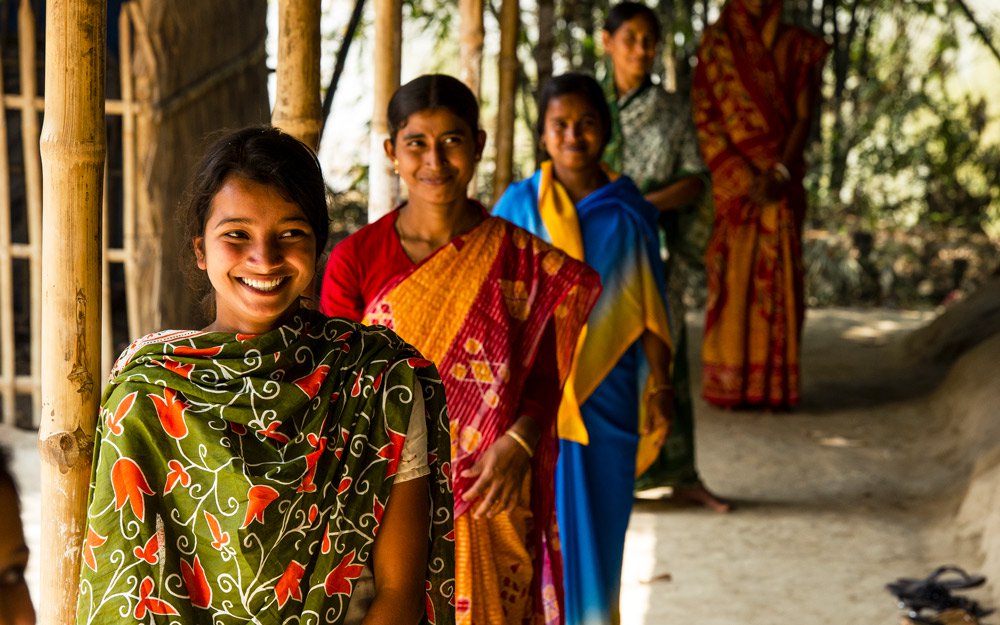
What Can We Do?
What can we—those of us who have hearts that beat with concern about the unbelievable evils of this world—do about the women worldwide who face discrimination and violence? How can anyone make a dent in a problem with such magnified proportionality? How can that horrific statistic—100 million missing women—be conquered, overcome, defeated, reduced or even eliminated?
Well, there are some things we can do, small as they seem, but mighty nevertheless in their possibility:
 We can sponsor girls (and boys) so they get educated through programs like GFA’s Bridge of Hope Program. And if $35 a month is too much for you (and it is for some compassionate people), invite your small group, Sunday School class, men’s softball league, neighborhood coffee-klatch or members of your extended family to pool funds.
We can sponsor girls (and boys) so they get educated through programs like GFA’s Bridge of Hope Program. And if $35 a month is too much for you (and it is for some compassionate people), invite your small group, Sunday School class, men’s softball league, neighborhood coffee-klatch or members of your extended family to pool funds.
 Think about this question: Why do more people not see this inequality and neglect, not grieve for the women and girls who have experienced such hardships and take action to be part of the solution? Then read the book of Luke and think about the societal shift that begins with women’s encounters with Jesus.
Think about this question: Why do more people not see this inequality and neglect, not grieve for the women and girls who have experienced such hardships and take action to be part of the solution? Then read the book of Luke and think about the societal shift that begins with women’s encounters with Jesus.
 Remind yourself of Christ’s question: “Do you see this woman?” Write it out on a card, and then use it as a bookmark in the books you read or paste it on your bathroom mirror. Write out a prayer, like the one I included in the beginning of this article, but adapt it to this horrific dilemma: Lord, what do You want me to do about the masses of women? And if you are not a praying person, send some discontented energy into the atmosphere any way you feel fit. Just don’t forget.
Remind yourself of Christ’s question: “Do you see this woman?” Write it out on a card, and then use it as a bookmark in the books you read or paste it on your bathroom mirror. Write out a prayer, like the one I included in the beginning of this article, but adapt it to this horrific dilemma: Lord, what do You want me to do about the masses of women? And if you are not a praying person, send some discontented energy into the atmosphere any way you feel fit. Just don’t forget.
Let us conclude by going back to Jesus, except now He is not eating at the table of the VIPs. He is bloody, tortured, hanging from a cross and nearing death. The Gospel of John describes the inhumanity of the Roman soldiers and the crowds standing beneath the cross.
“Now there stood by the cross of Jesus His mother, and His mother’s sister, Mary the wife of Clopas, and Mary Magdalene. When Jesus therefore saw His mother, and the disciple whom He loved standing by, He said to His mother, ‘Woman, behold your son!’ Then He said to the disciple, ‘Behold your mother!’ And from that hour the disciple took her to his own home.” [28]
Concern for the widow. Concern for the women.
“Look at this woman. Do you now see your mother?”
So, let us also be about this work in the world.
This Special Report article originally appeared on GFA.org.
Learn more about Gospel for Asia’s programs to help women through Vocational Training, Sewing Machines and Literacy Training.
To read more news on gender imbalance and violence against women on Missions Box, go here.
For more information about this, click here.

